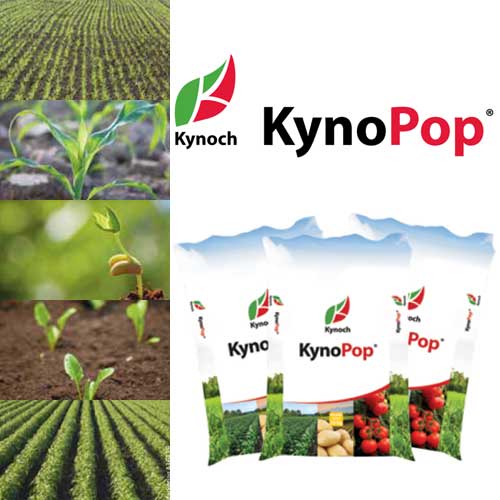
Where to expect trace element deficiencies?
31/07/2024
Real time insights by remote sensing (NDVI) through the use of KynopreciseTM and PACSys drone technology
02/08/2024Acidity related definitions critical for interpretation
Take note that reference is often made regarding soil acidity, without specifying the relevant pool of acidity that is being referred to. Obviously, every pool would require different quantities of calcium carbonate and/or magnesium carbonate to neutralize the acidity. That brings it to the question of what the term soil acidity, really entails? Does it refer to acidity from the plants’ perspective, the soils’ perspective, or both, and also which pools of acidity?
Types of soil acidity
Beginning with soil-pH, individuals tend to speak of soil acidity and liming with a pH-value in mind, not realising that different pools of acidity exist. The pool of acidity reflected by measuring the soil-pH, is called, active acidity, an expression of the concentration of H+-ions in the soil solution (Schroeder, 1984). The H+-ions as such is not the toxic element towards plant roots, associated with typical visual Mg-deficiency symptoms. However, a low soil-pH causes increased or decreased solubility of cations, resulting in indirect negative plant reactions. Also, at a high soil-pH, complexation of nutrients also happens, except for molybdenum. The impact of soil-pH unto solubility and availability of nutrients in the soil was already illustrated in a diagram by Truog during 1943 (Bedassa, 2020). Solubilized aluminium ions (Al3+) are toxic towards plants and suppressing magnesium uptake (Mg2+), unfortunately not reflected directly in the soil-pH measurement. Although soil-pH is a useful index commonly measured when testing soil, it is often misunderstood and misused (WPHA, 2002).
Total acidity in acid soils is defined as consisting of two components, as indicated below:
Total acidity = exchangeable acidity + residual acidity
Total acidity can be determined by the titration of a soil suspension in a salt solution to a reference pH using a strong base or addition of increments of lime. However, a standard method for the determination of total acidity is to react a soil for several hours or overnight with a solution containing 0.5M BaCl2 (0.5 moles barium chloride solution), plus a triethanolamine (TEA) buffer adjusted to pH 8.0 or 8.2. Triethanolamine is well buffered at pH 8. The Ba2+ is included to displace acidity from soil components. A reference pH of 8.0 or 8.2 was chosen to represent the pH attained when a soil is limed with excess lime; also, the Al3+ acidity bound to clays is neutralized (Bloom, 2000).
Exchangeable acidity is the hydrogen (H+) and Al+ extractable with IM KCI (1 mole potassium chloride salt extractable acidity; Bloom, 2000), in other words, the titratable hydrogen (“and Aluminium”[1]) that can be replaced from the absorption complex by a neutral salt (Van der Watt & Van Rooyen, 1995). In order to interpret the impact of meaning of an exchangeable acidity value expressed in centimol per kilogram of soil (cmolckg-1) as a percentage of acidity, acid saturation need to be calculated. The following formula is used:
Acid saturation (%) = ((100 x (extractable acidity)) / T-value), where
Extractable acidity is the sum of salt extractable H+ and Al3+ cations expressed in cmolckg-1 and the T-value of the soil, also in the same unit of measurement (FERTASA, 2016).
Residual acidity is the acidity titrate-able, but not easily exchangeable acidity (non-extractable). Residual acidity is determined by the difference between the total acidity neutralized by raising the pH to a reference level (7.0 or 8.0) and the salt extractable acidity (Bloom, 2000).
Buffer Capacities of soils
Because of the differences in buffer capacity of soils, those of similar pH may require vastly different quantities of lime to yield the same increase in pH (Bloom, 2000). Any decent agricultural lime proposal should keep the buffer capacity of soil in mind. This suggest that on weak buffered soils (mostly sandy soils), liming could more easily done according to pH, while liming on highly buffered soils (mostly clayish soils) should rather be based on acid saturation.
Soil buffer capacity, influenced by soil texture, organic matter, and mineral composition, determines the soil’s ability to resist pH changes. Liming, the application of calcium and magnesium carbonates, can help neutralize soil acidity and improve fertility. However, the effectiveness of liming depends on the soil’s buffer capacity, with highly buffered soils requiring more lime to achieve the same pH increase.
Conclusion
Accurate interpretation of soil acidity requires understanding the critical definitions of active, exchangeable, and residual acidity. By recognizing the significance of each type and their interrelationships, farmers and soil managers can develop effective strategies to manage soil acidity, optimize soil fertility, and promote healthy plant growth.
References
Bedassa M (2020) Soil acid Management using Biochar: Review. Int J Agric Sc Food Technol 6(2): 211-217. OI: https://dx.doi.org/10.17352/2455-815X.000076 referring to Emil Troug (1943) USDA Year book of Agriculture. 42
Bloom, P.R., 2000. Soil pH and pH buffering. In: M.E. Sumner (ed.). Handbook of soil science. CRC Press.
FERTASA, 2016. Bemestingshandleiding. Agste hersiene uitgawe. Fertilizer Association of Southern Africa. Pretoria.
Schroeder, D., 1984. Soils – Facts and concepts. International Potash Institute, Bern, Switzerland.
Van Der Watt, H.v.H. & Van Rooyen, T.H., 1995. A Glossary of Soi8l Science. The Soil Science Society of South Africa, Pretoria.
WPHA, 2002. Western Fertilizer Handbook. 9th edition. Western Plant Health Association.
Compiled by Chris Schmidt, Senior Agriculturalist Kynoch Fertilizer. Contact us on 011 317 2000.







.png?v=1594369838025?v=1594369838026)